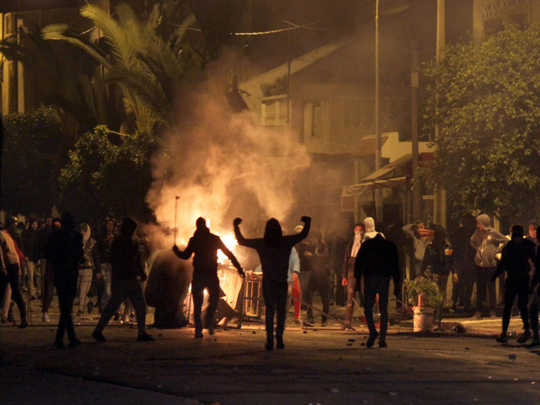
London: In the cradle of the Arab spring, it’s reckoning time again, when the hopes for the Tunisian revolution of seven years ago are measured against its gains. In Tunisia, and in other Arab states rocked by the insurgencies it sparked, hard-won victories appear more fragile than ever.
In many cases the underlying issues that fired revolts first in Tunisia, then in Egypt, Libya, Yemen and Syria, remain unchanged.
Sclerotic state structures that withered under sustained challenge from the street, and whose demise was seen as transformative, have clawed back losses by re-empowering the security forces that had shielded them for generations.
In Tunisia, as the anniversary of President Zain Al Abidine Bin Ali’s departure approaches, many conditions that led to his ousting still apply.
Large numbers of young people are underemployed and a stagnant economy remains dependent on the International Monetary Fund, which has imposed austerity measures that have sparked fresh protest. And figures from the Bin Ali regime have made political comebacks.
“There has been a clear effort by the political elite to bring an end to the revolutionary momentum of 2011,” said Rory McCarthy, an expert on Tunisia and fellow of Magdalen College, Oxford University.
“These protests are people pushing back against that. So far it’s been a very conservative transition. There have been political reforms, lots of parties, free elections, but few social or economic reforms. Plus, there’s lots of evidence of backsliding towards old techniques of rule.”
Anti-government protests that have raged through Tunisia for the past week are expected to intensify over the weekend, and authorities have been accused of the sort of indiscriminate retaliation that caused demonstrations in the days before Bin Ali’s fall.
Economic and social marginalisation remains a driving theme in Tunisia, as it does in Egypt, where a security structure that was partly dismantled after the autocratic leader Husni Mubarak was forced to resign again holds sway over most aspects of society. Open defiance in Egypt is now rare, with President Abdul Fattah Al Sissi’s government allowing little space for political discourse or dissent.
The country’s economy remains in dire shape, with inflation spiking and lower income earners struggling to survive.
Human rights activists and journalists are enduring an unprecedented crackdown.
Al Sissi has cast himself as the only man capable of fighting an Islamist insurgency in the Sinai , which has claimed more than 1,000 lives.
Countering terrorism trumps all other political obligations, as it has in Libya, where initial hopes for a transition away from Muammar Gaddafi’s four-decade dictatorship have led to a country effectively split in two , with tribes, clans, Daesh and a nascent old guard ruthlessly competing for power and influence, with little to no effective central governance.
In Syria, a destructive civil war had replaced calls for civil change by early 2012. Six years on, it appears to be approaching an endgame, with few of the protesters’ calls for change having been met, and the Al Assad regime, directed by its backers, Iran and Russia, in a winning position after huge losses of blood and assets.
In Tunisia, where it all began, protesters say they have not lost hope for lasting change.
The country remains the only relative success story of the Arab spring, and has made moves towards democratic rule, with free elections, seamless transitions of power, and attempts to build institutions, among other gains. “It’s far more successful than any other Arab spring country obviously,” said McCarthy. “But the future is still contested.”












